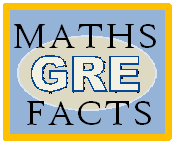Now, here’s a tip about the weird GRE question type called Quantitative Comparison or simply QC. As we know, in QC questions there are two columns, ‘A’ and ‘B’, containing some quantities. Our job is to evaluate the quantities and compare their magnitudes. In QC questions, the options are always as follows:
(A) Quantity under Column A is GREATER THAN quantity under Column B
(B) Quantity under Column A is LESS THAN quantity under Column B
(C) Quantity under Column A is EQUAL TO quantity under Column B
(D) RELATIONSHIP CANNOT BE ESTABLISHED using the given information.
Now look at this example:
x2 – 2x – 24 = 0
y2 – 3y + 2 = 0
Column A Column B
x y
The question asks us to compare ‘x’ and ‘y’. In order to get the answer, we need to solve both the quadratic equations. When we do this, we get the following values: x (4, -6) and y (2, 1)
Thus, if we pick 4 as the value of ‘x’, it is greater than both values of ‘y’. Hence, option (B) and option (C) can be rejected outright.
Now, we are left with only two options, (A) and (D). But if we pick -6 as the value of ‘x’, it is less than both the values of ‘y’ so, we have to eliminate option (A) and thus, we have option (D) as the final answer!
Why was this example given? To show you that is that the only time we need to be extra cautious when solving QC questions is when we think that the answer is probably option D!
Now, try this one:
X < (1/X)
Column A Column B
X X2
see answer here

